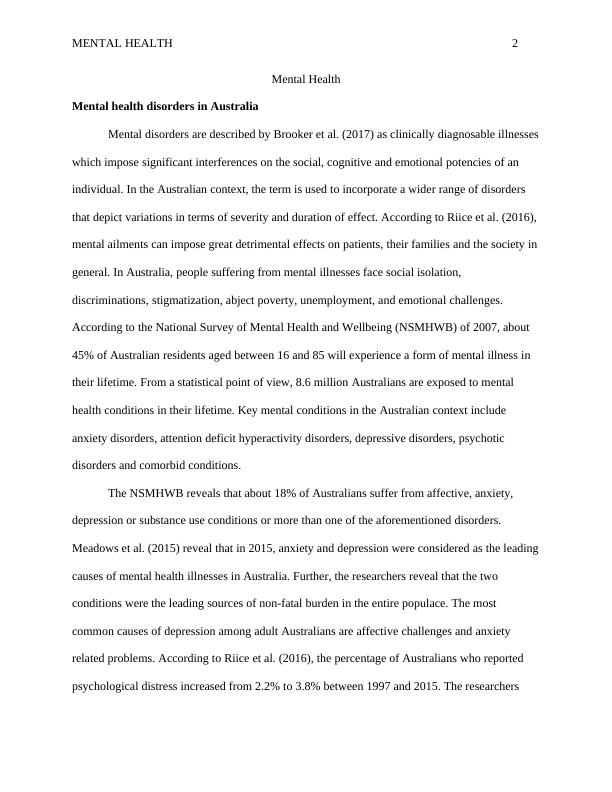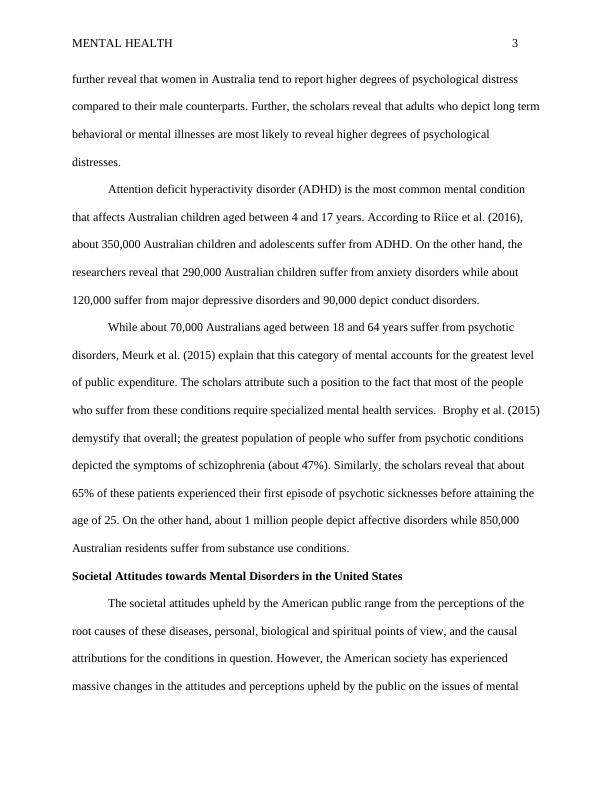Mental Health Disorders in Australia
This assignment is an essay on mental health issues in adulthood for the course COM564 at Excelsia College.
12 Pages2850 Words279 Views
Added on 2023-04-06
About This Document
This article discusses the prevalence and impact of mental health disorders in Australia. It explores different types of disorders and their effects on individuals and society. The article also compares care practices for mentally ill patients in Australia and the United States.
Mental Health Disorders in Australia
This assignment is an essay on mental health issues in adulthood for the course COM564 at Excelsia College.
Added on 2023-04-06
ShareRelated Documents
End of preview
Want to access all the pages? Upload your documents or become a member.
Barriers to Seeking Mental Health Help and Adherence to Treatment Interventions among Australian Adolescents
|15
|4371
|257
Depressive Disorder: Types, Causes, Symptoms, Diagnosis and Treatment
|20
|1673
|436
ADHD Patients Should Take Medications: An Argumentative Essay
|7
|1661
|457
Mental Illness in Health Care Research Paper 2022
|7
|1981
|7
Communication Strategies for Nursing Associates Dealing with Attention Deficit Hyperactivity Disorder
|9
|2474
|190
Mental Health Among Australian Medical Professionals: A Critical Review
|8
|2788
|162




